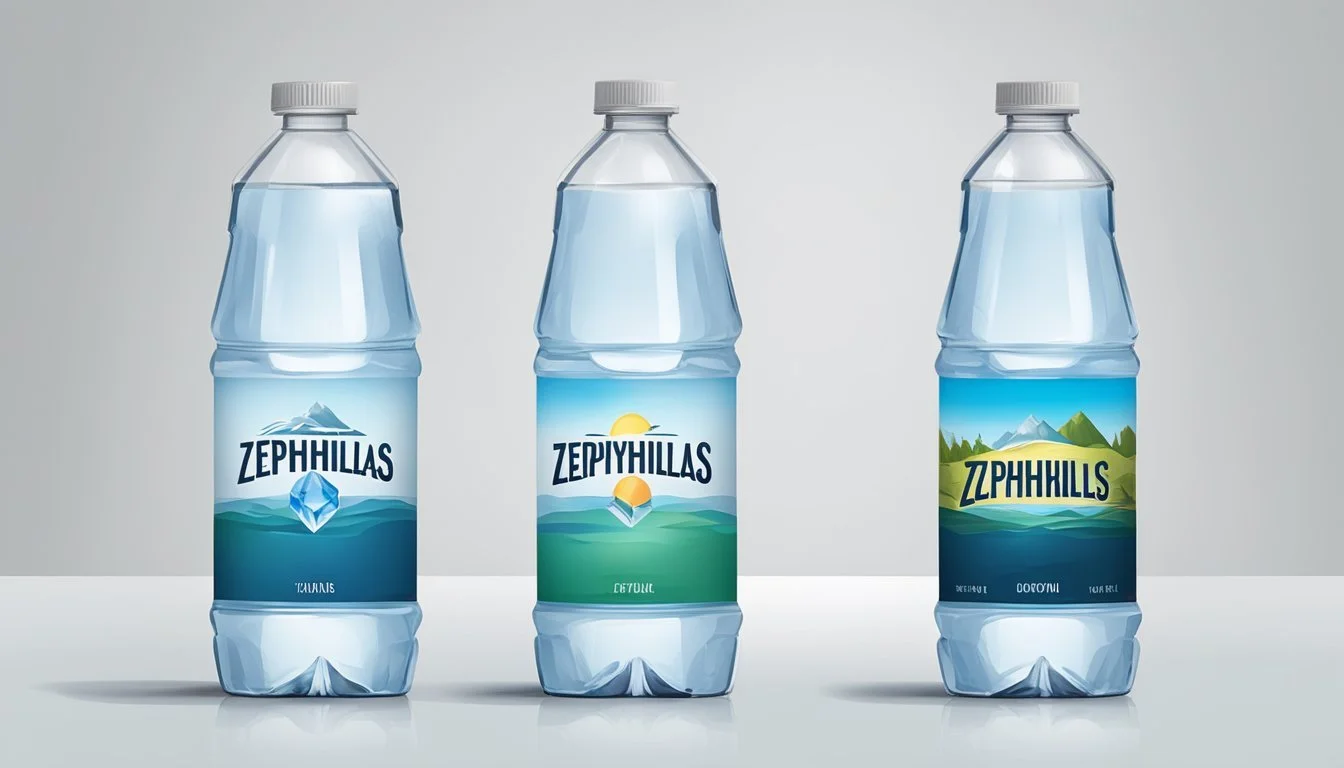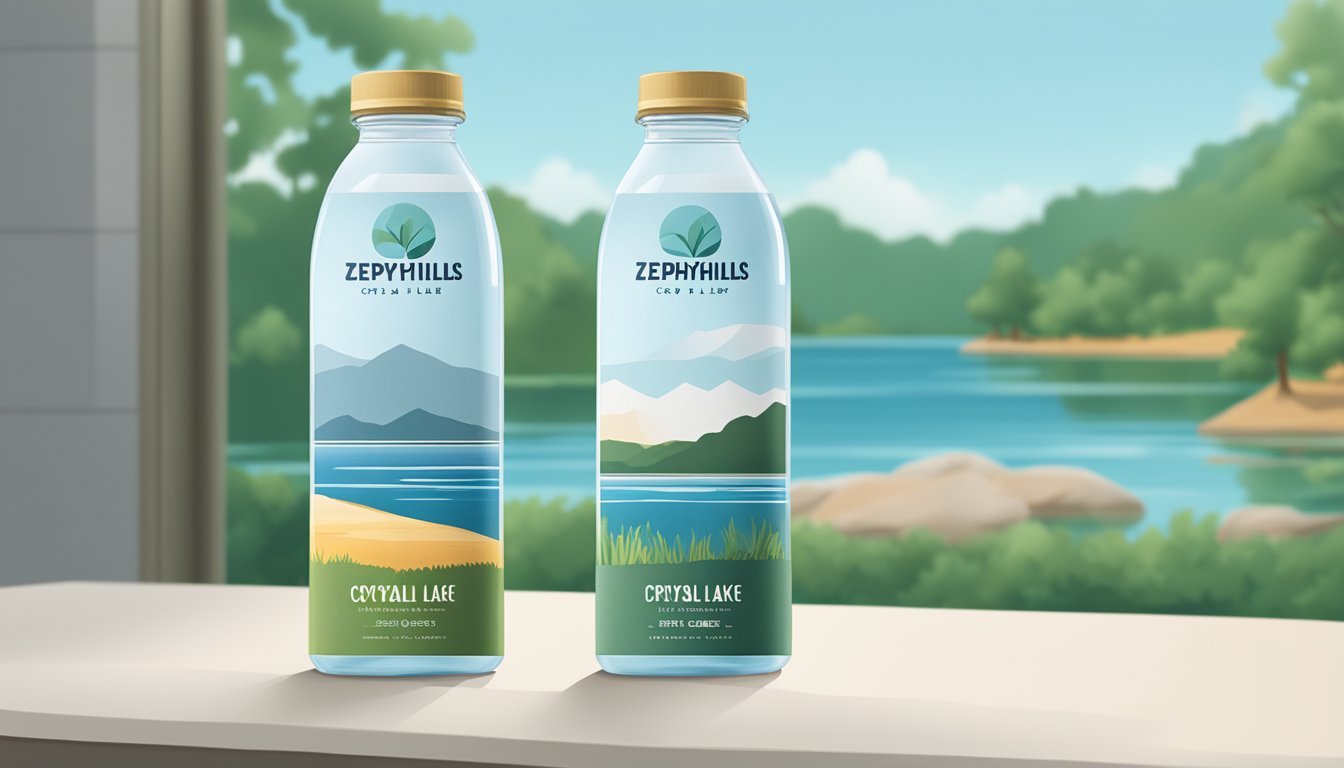Zephyrhills vs. Crystal Lake
A Clear Analysis of Bottled Water Quality
Bottled water options can be overwhelming, but two popular choices often come to the forefront: Zephyrhills and Crystal Lake. Zephyrhills water is drawn from natural springs and is known for undergoing a rigorous multi-step purification process. This ensures clean, safe drinking water enriched with essential minerals like calcium, magnesium, and potassium.
Crystal Lake, on the other hand, prides itself on its purity and refreshing taste. Although less widely reviewed than Zephyrhills, it aims to deliver a similar promise of quality and safety. For those who prioritize mineral content and stringent purification, Zephyrhills may edge out as the preferred choice.
Comparing the two, consumers might find subtle differences in taste and composition, potentially swaying their preference. Both offer reliability, but understanding their unique qualities can help in making an informed decision. The following sections will break down the specifics and nuances between these two brands.
The Rise of Bottled Water
Bottled water has become a major player in the beverage industry, capturing the attention of health-conscious consumers and those seeking convenience. Key trends have propelled brands like Zephyrhills and Crystal Lake to prominence in the market.
History and Consumer Trends
Bottled water's popularity began to climb in the 1970s when concerns about tap water quality emerged. As awareness grew, consumers turned to bottled water as a safer alternative. Marketing campaigns emphasized purity and health benefits, leading to increased demand.
In the 1990s, the market exploded with various brands offering spring, mineral, and purified water. By the 2000s, bottled water had surpassed soft drinks in sales. Today, sustainability concerns drive a shift towards eco-friendly packaging and ethical sourcing.
Popular Brands in the Market
Several brands dominate the bottled water industry, each with unique offerings. Zephyrhills, sourced from Florida’s limestone aquifers, boasts naturally occurring minerals for a refreshing taste. Crystal Lake, another top contender, is praised for its pure and cool flavor.
Other notable brands include Nestlé Pure Life, offering enhanced mineral content, and Fiji Water, known for its artesian source. Consumers often choose based on taste, source, and mineral content. These preferences highlight the diversity and competitive nature of the bottled water market.
Evaluating Water Quality
When comparing Zephyrhills and Crystal Lake bottled water, examining their water sources, purification processes, quality standards, and mineral content provides insight into their health benefits.
Sources and Purification Processes
Zephyrhills sources its water from natural springs in Florida. The water undergoes minimal processing, often just enough to ensure it's free of contaminants while maintaining natural mineral content.
Crystal Lake, on the other hand, uses a mix of spring and purified water sources. Its purification process involves multiple steps, typically including filtration and reverse osmosis to remove pollutants. Zephyrhills focuses on retaining the natural qualities of spring water, while Crystal Lake emphasizes thorough purification.
Quality Standards and Assessments
Both brands adhere to stringent quality standards set by the FDA and EPA to ensure safety. Zephyrhills undergoes thorough testing to confirm the absence of contaminants like heavy metals and microbial agents.
Crystal Lake also meets these standards but employs additional treatment methods, such as UV light and ozonation, to ensure purity. Independent quality assessments, such as those by Consumer Reports, often highlight both brands' adherence to these strict guidelines, ensuring the water is safe and clean.
Mineral Content and Health Benefits
Zephyrhills water contains naturally occurring minerals like calcium, magnesium, and potassium, contributing to its health benefits. These minerals are essential for bone health, metabolic function, and electrolyte balance.
Crystal Lake often has added minerals post-purification to enhance taste and health benefits. While both waters provide necessary electrolytes, Zephyrhills offers a natural composition, whereas Crystal Lake’s mineral profile may be more controlled and consistent. Comparing mineral content can help consumers decide based on personal health preferences.
Comparing Zephyrhills and Crystal Lake
Zephyrhills and Crystal Lake are popular choices in the bottled water market, each offering distinct features in terms of brand history, water source, and taste profile.
Brand History and Reputation
Zephyrhills, established in Florida, has a long-standing reputation for providing high-quality spring water. Known for its commitment to environmental sustainability, Zephyrhills forms part of Nestlé Waters North America, which emphasizes green practices in its bottling and distribution processes.
Crystal Lake, on the other hand, is a smaller, regional brand with a dedicated following. While less renowned on a national scale, Crystal Lake is praised for its community-oriented approach and focus on maintaining the purity of its local spring sources. It earns loyalty through consistent quality and a reputation for transparency.
Source and Origin
Zephyrhills sources its water from natural springs located in Florida. The company highlights the natural filtration process that the water undergoes as it moves through the earth, claiming it gives the water its distinct freshness.
Crystal Lake also sources its water from natural springs, but in a different region, which adds to its unique taste. The specific geological formations surrounding Crystal Lake’s source lend unique mineral properties to the water. Both brands emphasize their sources' purity, although the regional differences result in differing mineral compositions.
Taste Profile and Consumer Preference
Consumers often praise Zephyrhills for its crisp and clean taste, attributed to the naturally occurring minerals in its source. The taste is described as refreshing without being overpowering, making it a popular choice for hydration throughout the day.
Crystal Lake is appreciated for its slight mineral flavor, offering a more robust taste profile. Some consumers prefer Crystal Lake for its richer texture and subtle mineral notes, which they find more satisfying.
In side-by-side taste tests, preferences can vary widely, with many people selecting based on their personal taste preferences and the specific mineral content. Both brands cater to different palates, resulting in a dedicated customer base for each.
Both Zephyrhills and Crystal Lake provide excellent choices for bottled water enthusiasts, with differences in brand history, source, and taste allowing for a range of consumer preferences.
Health and Hydration
Choosing the right bottled water impacts hydration and overall health. Zephyrhills and Crystal Lake offer unique properties relevant to safety and hydration.
Hydration and Bodily Function
Proper hydration supports various bodily functions. Zephyrhills, sourced from natural springs, contains essential minerals that aid in maintaining electrolyte balance. These minerals, such as magnesium and calcium, are crucial for muscle function and energy production.
Crystal Lake, typically a purified water, undergoes rigorous filtration to remove impurities. While it may lack natural minerals, it compensates by providing clean drinking water free from contaminants. Both brands ensure water purity, supporting the immune system by flushing out toxins.
Hydration is vital for cognitive function, mood regulation, and overall vitality. Whether from a natural spring or purified source, both brands contribute to meeting daily hydration needs.
Safety and Health Risks
Safety is a top priority for consumers. Zephyrhills’ natural spring source undergoes regular testing to ensure absence of heavy metals and other contaminants. Its natural filtration process involves minimal chemical additives, reducing potential health risks.
Crystal Lake water, processed through advanced filtration, often includes steps like reverse osmosis and chlorine treatment. This process eliminates harmful bacteria and viruses, ensuring safety. However, concerns about residual chlorine and the absence of natural minerals persist.
Consuming bottled water from reliable brands minimizes health risks associated with contaminated sources. Regularly tested and monitored, both Zephyrhills and Crystal Lake prioritize consumer safety. Ensuring clean drinking water is pivotal for health benefits and avoiding potential health complications.
Environmental and Sustainability Considerations
The environmental impact of bottled water extends from the bottling process to the efforts brands make towards sustainability. Key factors include plastic waste generation and initiatives towards environmentally conscious practices.
Bottling Process and Plastic Waste
Zephyrhills sources its water from natural springs, which involves minimal processing compared to purified water brands. This method requires less energy but also has its drawbacks, such as potential impacts on local groundwater levels.
Crystal Lake, like many bottled water companies, uses plastic bottles that contribute to waste. The production of these bottles consumes fossil fuels and adds to landfill and ocean pollution. Both brands need to address the environmental costs associated with plastic use.
Sustainability Efforts by Brands
Zephyrhills has made significant strides in managing their spring sources. They focus on sustainable water extraction practices to prevent depletion of local aquifers. The brand also promotes recycling programs aimed at reducing plastic waste.
Crystal Lake has introduced eco-friendly initiatives, including the use of recycled plastic in their bottles. They invest in renewable energy for their operations and participate in clean water projects, reinforcing their commitment to sustainability.
Efforts by both brands demonstrate a growing awareness of their environmental impacts and a dedication to reducing their carbon footprint.
Packaging and Convenience
Both Zephyrhills and Crystal Lake offer different packaging solutions, influencing consumer convenience and product appeal. These include variations in bottle types, materials, and market availability, making each brand unique in its offerings.
Bottle Types and Materials
Zephyrhills primarily packages its water in plastic bottles, known for being lightweight and convenient for on-the-go usage. They provide various sizes, from smaller 8-ounce bottles to larger 1-gallon options. The brand does not prominently feature other alternatives like glass bottles or boxed water.
In contrast, Crystal Lake offers a broader range of packaging materials. While they also use plastic bottles, they emphasize eco-friendliness by incorporating recycled plastic in their production. Furthermore, Crystal Lake provides glass bottle options, appealing to consumers who prefer a more premium and reusable option. Although less common, the availability of boxed water indicates their commitment to sustainable packaging.
Market Availability and Consumer Convenience
Zephyrhills enjoys widespread availability, particularly in the southeastern United States. It is often found in major supermarkets, convenience stores, and online retailers. Easy access across different retail channels enhances consumer convenience, making Zephyrhills a readily accessible choice for many.
Crystal Lake, while not as universally available as Zephyrhills, maintains a strong presence in niche markets and specialty stores. They also focus on online direct-to-consumer sales, offering subscription services that deliver water right to the doorstep. This approach caters to a specific demographic seeking convenience and sustainability.
Both brands prioritize packaging that caters to diverse consumer needs, underscoring their commitment to providing convenient hydration solutions.
Marketing and Brand Perception
Both Zephyrhills and Crystal Lake have established strong marketing campaigns, each leveraging unique strategies to build consumer loyalty and trust. This section discusses their advertising methods and the degree to which their brand perceptions have garnered customer support.
Advertising Strategies
Zephyrhills emphasizes its natural spring water origins and Florida roots in its marketing. They frequently highlight the natural filtration process and the unique mineral composition of their water. Advertisements often feature imagery of pristine springs and lush landscapes, reinforcing their commitment to natural purity.
Crystal Lake, on the other hand, focuses on its crystal-clear water and premium quality. Their marketing often highlights the rigorous purification processes used to ensure the highest standards. Crystal Lake ads typically portray an upscale image, promoting their product as a luxury option in the bottled water market.
Consumer Loyalty and Brand Trust
Zephyrhills has built a loyal customer base largely through consistent messaging about its natural origins. The brand is particularly popular in regions where their springs are located, with many consumers trusting the local source of the water.
Crystal Lake's approach is more about luxury and exclusivity, appealing to consumers who are willing to pay a premium for what they perceive to be higher quality. This has helped the brand to cultivate a niche but dedicated following. Trust in Crystal Lake often stems from their transparent purification process and premium branding.
Regulation and Safety
Government regulations and industry oversight ensure the bottled water remains safe for consumption. Transparency in quality reports and accurate labeling help consumers make informed choices.
Government and Industry Oversight
Both Zephyrhills and Crystal Lake bottled water are regulated by the Environmental Protection Agency (EPA) and Food and Drug Administration (FDA). Zephyrhills, being natural spring water, complies with strict FDA safety standards concerning contaminants.
Crystal Lake water must adhere to similar EPA standards before purification and then meet FDA regulations. These agencies enforce safety and quality standards to minimize contamination risks, ensuring the water is safe to drink. Regular inspections and compliance with state and federal laws play a crucial role in this process.
Quality Reports and Consumer Transparency
Zephyrhills provides detailed quality reports, reflecting its commitment to consumer transparency. These reports include information about the water source, mineral content, and any treatment processes.
Crystal Lake, like many bottled water brands, also discloses its water quality in annual reports. Labels on both brands clearly indicate the water source and any additives, allowing consumers to make informed choices.
Transparency in labeling and the availability of quality reports are essential for consumer trust and safety. Providing easy access to these reports underscores a brand's commitment to maintaining high safety and quality standards.
Final Thoughts
When comparing Zephyrhills and Crystal Lake bottled water, several factors come into play.
Quality is a key consideration. Zephyrhills draws from natural springs, providing essential minerals like calcium and magnesium. Crystal Lake offers a similar mineral profile, ensuring refreshing and clean hydration.
Hydration plays a crucial role. Both brands offer pure water that can support daily hydration needs effectively. Consumers have reported positive experiences with both.
Environmental Impact is another significant factor. Zephyrhills and Crystal Lake both emphasize sustainability. They use recyclable materials in their packaging, highlighting their commitment to reducing plastic waste.
Sustainability efforts are evident in both brands. Zephyrhills sources water responsibly, making it a reliable option for eco-conscious consumers. Crystal Lake also focuses on environmentally friendly practices, which include reduced carbon footprints in their bottling processes.
Both bottled waters provide hydration and maintain high quality standards.
Choosing between Zephyrhills and Crystal Lake depends on availability, personal preference, and consideration for the environmental impact of each brand. Both aim to deliver pure, refreshing water while minimizing their ecological footprint.
More About Zephyrhills
Core Hydration vs Zephyrhills: Which Bottled Water is Better?
Icelandic Glacial vs Zephyrhills: Which Bottled Water is Better?
Mountain Valley Spring Water vs Zephyrhills: Which Bottled Water is Better?
Nestle Pure Life vs Zephyrhills: Which Bottled Water is Better?
Poland Spring vs Zephyrhills: Which Bottled Water is Better?
San Pellegrino vs Zephyrhills: Which Bottled Water is Better?
Zephyrhills vs Aqua Carpatica: Which Bottled Water is Better?
Zephyrhills vs Cascade Mountain: Which Bottled Water is Better?
Zephyrhills vs Crystal Geyser: Which Bottled Water is Better?
Zephyrhills vs Hawaii Volcanic: Which Bottled Water is Better?
Zephyrhills vs Hawaiian Springs: Which Bottled Water is Better?
Zephyrhills vs Kirkland Signature: Which Bottled Water is Better?
Zephyrhills vs Purely Sedona: Which Bottled Water is Better?
Zephyrhills vs Richard's Rainwater: Which Bottled Water is Better?
Zephyrhills vs Solan de Cabras: Which Bottled Water is Better?
Zephyrhills vs Talking Rain AQA: Which Bottled Water is Better?
Zephyrhills vs Whole Foods 365: Which Bottled Water is Better?
Zephyrhills vs Whole Foods Italian Still Mineral water: Which Bottled Water is Better?
More About Crystal Lake
Aqua Carpatica vs Crystal Lake: Which Bottled Water is Better?
Cascade Mountain vs Crystal Lake: Which Bottled Water is Better?
Core Hydration vs Crystal Lake: Which Bottled Water is Better?
Crystal Geyser vs Crystal Lake: Which Bottled Water is Better?
Crystal Lake vs Essence pH10: Which Bottled Water is Better?
Crystal Lake vs Proud Source: Which Bottled Water is Better?
Hawaii Volcanic vs Crystal Lake: Which Bottled Water is Better?
Hawaiian Springs vs Crystal Lake: Which Bottled Water is Better?
Ice Mountain vs Crystal Lake: Which Bottled Water is Better?
Icelandic Glacial vs Crystal Lake: Which Bottled Water is Better?
Kirkland Signature vs Crystal Lake: Which Bottled Water is Better?
Liquid Death vs Crystal Lake: Which Bottled Water is Better?
Mountain Valley Spring Water vs Crystal Lake: Which Bottled Water is Better?
Nestle Pure Life vs Crystal Lake: Which Bottled Water is Better?
Poland Spring vs Crystal Lake: Which Bottled Water is Better?
Purely Sedona vs Crystal Lake: Which Bottled Water is Better?
Richard's Rainwater vs Crystal Lake: Which Bottled Water is Better?
San Pellegrino vs Crystal Lake: Which Bottled Water is Better?
Simple Truth vs Crystal Lake: Which Bottled Water is Better?
Solan de Cabras vs Crystal Lake: Which Bottled Water is Better?
Talking Rain AQA vs Crystal Lake: Which Bottled Water is Better?
Whole Foods 365 vs Crystal Lake: Which Bottled Water is Better?
Whole Foods Italian Still Mineral water vs Crystal Lake: Which Bottled Water is Better?







